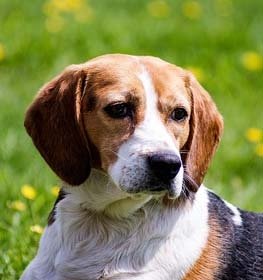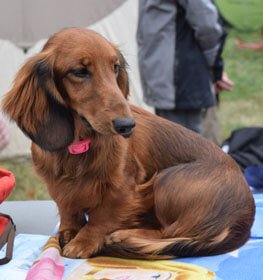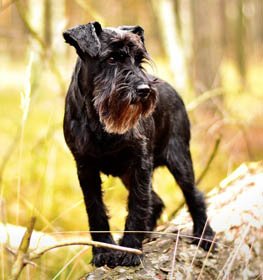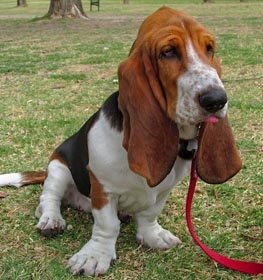Beaglier Information & Dog Breed Facts
Collection of all the general dog breed info about Beaglier so you can get to know the breed more.
| Group | Hunting Dogs |
|---|---|
| Popularity Rank | 270 |
| Reviews | 1 |
| User Ratings | |
|
Compare the Beaglier With Other Dogs
Select at least one dog breed to make the comparsion. | |
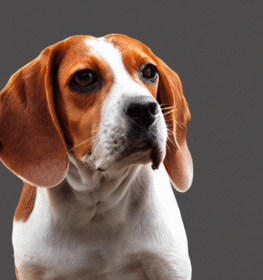 | |
| Origin | |
|
Common Names & Aliases
What other names is a Beaglier known by? Discover all traditional, regional and informal names used for this breed. | BeagelierBeagalier |
|---|---|
|
Breed Classification
What type of dog breed is a Beaglier? Learn about its genetic classification and breeding category. | Cross Breed |
|
Size Classification
What size category is a Beaglier? Learn how big the Beaglier breed typically grows. | Small |
|---|---|
|
Weight Statistics
How much does a Beaglier weigh? Discover typical weight ranges for adult males and females of the Beaglier breed. | 10-25 pounds (4.5-12 kg) |
|
Average Weight
What is the average weight of a Beaglier? | 17.5 pounds (8.5 kg) |
|
Height
How tall is the Beaglier? Beaglier height: | 12-16 inches (30.5-40 cm) |
|
Average Height
What is the average height of a Beaglier? | 14 inches (30.22.5 cm) |
|
Price Range
How much does a Beaglier puppy cost? Find current market prices and factors affecting Beaglier costs. | $800-$1200 If you choose to purchase the Beaglier, you should know that the mentioned amount of money is an average of the collected data from breeders’ sites and puppy finder places. If you have a Beaglier for sale, please advertise it on a reliable website to make sure the Beaglier gets to a happy place. |
|---|---|
|
Availability
How easy is it to get a Beaglier? How many Beaglier are there in the world? | Average: The Beaglier is a commonly available dog breed. There is less risk of overbreeding compared to the very popular dogs. Of course, they may be more popular in some countries, and inbreeding may occur, so be careful. |
|
Intelligence Rating
How intelligent is a Beaglier? Discover the Beaglier's intelligence ranking and learning capabilities. | Low to average: This canine intelligence is not the brightest one. Keep in mind that if you want to teach them any tricks, they understand and memorize new commands in 40-80 repetitions. Beaglier obey the first command 30% of the time or better. So if you want to have a smart dog, you might have to reconsider your choice with this breed.
The Beaglier ranks below average in the intelligence ranking of dogs. |
|---|---|
|
Training Difficulty
How easy is it to train a Beaglier? Learn about the Beaglier's trainability and response to training methods. | Beaglier dogs are quite easy to train. Sometimes they can be challenging, but if you're consistent in teaching new commands they will obey for sure. |
|
Territorial Protection
Is a Beaglier protective of its territory? Learn about the Beaglier's guarding instincts and behavior. | Beaglier dogs can't provide protection for their territory. It's better to leave them out of the duty of protecting your valuables and property. |
|
Personality Traits
What personality does a Beaglier have? Learn about characteristic Beaglier temperament and behavior traits. | PlayfulAffectionateLoyalGood natured |
|---|---|
|
Sensitivity Level
How sensitive are they? Beaglier sensitivity: | They are a little bit more sensitive than other dog breeds. Soft punishment affects them emotionally. Beaglier dogs don't tolerate irregular daily routines, noisy households, and frequent guest visits really well.
They are receptive to their owner's emotions and make wonderful family companions. |
|
Affection Level
How affectionate are they? Is a Beaglier a good family dog? | High: Beaglier dogs are genuinely loyal, soft and gentle, loving, and affectionate dogs toward their handlers. They enjoy quality time with their owners despite the activity and are considered great therapy dogs for those in need. This breed responds strongly to their handler's emotions because they bond closely. Their happiness is your happiness. |
|
Social Needs
How much social interaction does the Beagelier need? Beaglier social needs: | Beaglier dogs need a lot of social interaction. They desire to always be with someone or around people. This breed hates being left alone. |
|
Impulse to Wander or Roam
How likely is the Beaglier to run away? Does this breed explore or wander a lot? Does Beaglier roam? | Beaglier dogs have high wanderlust potential, which means that this breed has a strong desire for exploring the world. Safer to walk them on a leash unless you teach them how to get back to you on command. This breed is also able to cause damage to your fence. |
|
Barking Frequency
Does a Beaglier bark a lot? Learn about typical Beaglier vocalization patterns and triggers. | A lot: Beaglier is a particularly loud breed. They often enjoy barking and howling loudly. If you want a quiet dog, not the best choice.
The main triggers for barking are fear, attention, alarm, boredom, greeting, separation anxiety, compulsive barking, and defense. |
|---|---|
|
Playful Nature
How playful is a Beaglier? Understand the typical play drive and energy level of the Beaglier breed. | The Beaglier is a highly playful breed. Excited barking and sometimes nipping will alert you to play. |
|
Lifestyle Adaptability
How adaptable is a Beaglier to lifestyle changes? Learn about the Beaglier's flexibility to new situations. | Beaglier dogs adapt very well to lifestyle changes and basically all living environments. They don't mind moving from one place to another with their owner. |
|---|---|
|
Alone Time Tolerance
Can a Beaglier be left alone? Learn about the Beaglier's tolerance to solitude. | Beaglier dogs tend to have separation anxiety when their owners left them alone at home because they bond very closely with them. |
|
Bite Risk Assessment
What is a Beaglier biting potential? Learn about the Beaglier's bite risk factors. | Low 🔽 The Beaglier has a low chance of biting somebody. Top reasons for dog bite: protection, pain, excitement, herding instinct, being provoked. (Data based on the available online bite statistics.) |
|---|---|
|
Mouthing Tendency
Is a Beaglier mouthy? Learn about the Beaglier's tendency to use mouth during play. | Beaglier dogs have an average tendency to nip, chew, playbite, or herd people. It's a common habit during puppyhood, not aggressive behavior. These "bites" don't hurt, but Beaglier dogs need to be taught a good attitude. |
|
Bite Strength Rating
How strong is a Beaglier bite? Learn about the Beaglier's bite force measured in PSI. | Between 100 and 200 PSI 🔽 Beaglier bite force: Weak. The Beaglier bite force is considered weak when compared to other dog breeds. The bite force Beaglier measurements usually fall below 200 PSI, making them one of the breeds with the weakest bite force. The bite force of a Beaglier may be weak, but it's important to remember that any dog's bite can still be dangerous if not managed properly. Despite the bite force of Beaglier being lower, it does not make them any less lovable or enjoyable as pets.
Beaglier bite wounds might not be as severe, but it is still essential to be cautious and prevent any biting incidents. They are usually not aggressive and very friendly towards children and other animals. To ensure a well-behaved dog, it's essential to learn how to train a Beaglier puppy not to bite from an early age. With proper training and socialization, a Beaglier can be a wonderful addition to any family, providing love and companionship for years to come. |
|
Average Lifespan
How long does a Beaglier live? Learn about the typical lifespan of the Beaglier breed. | 13-15 years The average lifespan of Beaglier: 14 years |
|---|---|
|
Climate Tolerance
How well does a Beaglier handle different weather? Learn about the Beaglier's climate adaptability. | Prefers average to warm weather conditions Different dogs have different preferences when it comes to weather conditions. However, in general, most dogs prefer average to warm weather conditions, as they typically find hot weather conditions to be uncomfortable and taxing. |
|
Health Concerns
What health issues are common in a Beaglier? Discover typical conditions affecting the Beaglier breed. | Beagliers are commonly healthy dogs. Vet costs aren't expensive with this breed. |
|
Vet Care Frequency
How often does a Beaglier need vet visits? Learn about the Beaglier's veterinary care requirements. | Rare The Beaglier should have a complete physical check-up at least every 12-18 months (but preferably once per year). If your dog shows any symptoms, call your veterinarian. |
|
Health Problems
What genetic/health problems does the Beaglier breed have? What are the health issues and concerns of the Beaglier breed? Most common health risks of Beaglier: | Eye ProblemsJoint ProblemsEpilepsyEar InfectionsBeagle DwarfismThyroid Problems |
|
Energy Rating
How energetic is a Beaglier? Understand daily activity needs of the Beaglier breed. | Beaglier dogs have a higher energy level than other dog breeds. If you want a dog for snuggling on the couch, this breed isn't the perfect choice for you. |
|---|---|
|
Activity Requirement / Exercise Need
How much exercise does a Beaglier need? How much exercise do Beaglier dogs require per day?
Do Beaglier dogs need a lot of exercises? | Beaglier dogs need quite a lot of exercise. Daily walks should be on schedule. If you live an active life, this breed can be a good choice for you. |
|
Sleeping Need
How much sleep does the Beaglier breed need? | Beaglier dogs sleep 12-14 hours a day as an average dog and they're not considered a lazy breed. |
|
Obesity Tendency
Is a Beaglier prone to weight gain? Learn about the Beaglier's obesity risks. | High: The Beaglier breed has a strong tendency to be overweight. Try to find the happy medium between exercise and feeding. If you want to keep balance, increase the amount and frequency of your daily dog walk and play with the Beaglier more often.
If you notice any weight gain, consult your veterinarian and make a diet plan. Reduce unhealthy food and snacks, and measure the Beaglier weight regularly. |
|---|---|
|
Food Consumption
How much food does a Beaglier need daily? Learn about the Beaglier's feeding requirements. | 0.5 to 1.5 cups of high-quality dry food a day, divided into two meals. |
|
Allergy Friendliness
Is a Beaglier hypoallergenic? Learn about the Beaglier's suitability for allergy sufferers. | No Beaglier dogs don't do well with allergy sufferers by causing allergic reactions. Some dog breeds are even considered to higher possibility of an allergic response. Coat type isn't necessarily relevant, because most people are allergic to dander (flakes on the dog's skin) or saliva, not actually to dog hair. |
|---|---|
|
Coat Colors
What colors does a Beaglier come in? Discover all possible Beaglier color variations. | Black White Brown Tricolor |
|
Grooming Requirements
How much grooming does a Beaglier need? Learn about Beaglier coat maintenance requirements. | Effortless: The Beaglier requires minimal grooming. Seasonal flea treatment is needed, but cutting the dog's hair by a professional groomer isn't necessary. Ears and eyes should be cleaned sometimes to avoid infections. Beaglier is one of the best choices if you don't have the time, skill, or money to take care of a high-maintenance dog. Highly recommended for beginners. |
|
Drooling Tendency
Does a Beaglier drool a lot? Learn about the Beaglier's drooling habits. | The Beaglier is a perfect example of a very low drooling tendency. If you're disgusted by slobber spots on your clothes, the Beaglier could be a perfect choice for you. Drooling is the unintentional saliva flowing outside of the mouth. It can be completely normal or a sign of a health problem. Certain dog breeds drool minimum compared to others, just like the Beaglier.
If you notice any change in your dog's drooling habit, you should contact a vet as soon as possible. |
|
Stinkiness Rating
Does a Beaglier smell bad? Learn about the Beaglier's natural odor levels. | High 🔼 The Beaglier has a high chance of bad smell. Top reasons for dog stinkiness: infection of bad tooth/ear/skin folds, gas attacks. |
|
Coat Characteristics
What type of coat does a Beaglier have? Learn about the Beaglier's fur characteristics. | SoftSmooth |
|
Bathing Needs
How often does a Beaglier need baths? Learn about the Beaglier's bathing requirements. | 3-4 weeks More often than average. These dog coats tend to be longer, softer, and oilier than short-haired breeds. While a good bath every now and then is a great way to keep your buddy from becoming overly smelly, be mindful about overbathing.
Bathing will wash away your dog’s natural oils, while a simple brushing every few days should keep them clean. |
|
Shedding Level
How much do Beaglier dogs shed? How to control, reduce and prevent the shedding of the Beagelier? Do Beaglier dogs shed a lot? | Beaglier dogs shed moderately. It's a natural process of the hair growth cycle. Regular brushing reduces the amount of hair that sheds. It mostly depends on their health status and breed type. |
|
Child Compatibility
Is a Beaglier good with children? Learn about the Beaglier's behavior around kids of different ages. | Beaglier dogs are very kid-friendly dogs. This breed enjoys being surrounded by children.
|
|---|---|
|
Pet Compatibility
How well does a Beaglier get along with other pets? Discover the Beaglier's compatibility with other animals. | Beaglier dogs are generally with other pets. |
|
Stranger Friendly
Are they aggressive or friendly towards/with strangers? Beaglier temperament with other people: | Beaglier dogs are stranger-friendly dogs. |
|
Cat Friendly
How well do Beaglier dogs get along with cats? Are they good with kittens? What is this fido's temperament with cats? Can they be good with cats? Can the Beaglier breed live with a cat? | Beaglier dogs are average friendly towards cats. |
|
Dog Friendly
Is Beaglier good with other dogs? Are they dog-friendly dogs? How well do Beaglier dogs get along with other dogs? | Beaglier dogs are very dog-friendly dogs. If you want more dogs in your family or you'd like to join dog meetups, the Beaglier can be a great choice. |
|
Good For First Time Owners
Is Beaglier breed good for first-time owners? Do they make a good dog for novice owners? Is Beaglier breed suitable for first-time owners? | Yes Beaglier dogs are good for novice owners, due to their easy-going personality. |
|
Office Friendly
Are Beaglier dogs good office canines? Do Beaglier dogs make good office-friendly pets? Can they be office dogs? | No Beaglier is not the best dog breed for office environment. |
|
Senior Citizens Friendly
Are they senior citizens friendly dogs? How well do Beaglier dogs get along with the elderly people? What is the Beagelier temperament with senior people? Are Beaglier dogs good for elderly owners? | Beagliers are one of the best breeds for elderly people. |
|
Service Dog Capability
Can a Beaglier be a service dog? Learn about the Beaglier's service work potential. | Not really This breed generally not used as a service dog. A service dog is a term used in the USA to refer to any type of assistance dog specifically trained to help people who have disabilities, such as visual impairment, hearing impairments, mental disorders, seizures, mobility impairment, and diabetes. Service dogs are protected under the ADA (Americans with Disabilities Act).
Beaglier is not the best breed for service purposes. |
|---|---|
|
Therapy Work Suitability
Is a Beaglier good as a therapy dog? Learn about the Beaglier's therapy work aptitude. | Not really This breed is generally not used as a therapy dog. A therapy dog is a dog that might be trained to provide affection, comfort, and love to people in hospitals, retirement homes, nursing homes, schools, hospices, disaster areas, and people with anxiety disorders or autism.
Beaglier is not the best breed for therapeutic purposes. |
|
Scent Detection Ability
Is a Beaglier good at detection work? Learn about the Beaglier's scenting abilities. | Not really They are not typically employed for this type of work, but there may be exceptional cases. A detection dog or sniffer dog is a dog that is trained to use its senses (mostly its smell) to detect substances such as explosives, illegal drugs, wildlife scat, currency, blood, and contraband electronics such as illicit mobile phones.
Beaglier is not the best breed for detection purposes. |
|
Search & Rescue Potential
Can a Beaglier do search and rescue? Learn about the Beaglier's SAR capabilities. | Not really This dog breed is not typically used as a search and rescue dog. The use of dogs in search and rescue (SAR) is a valuable component in wilderness tracking, natural disasters, mass casualty events, and locating missing people.
The Beaglier is not the best breed for SAR purposes. |
|
Maritime Work Ability
Is a Beaglier good on boats? Learn about the Beaglier's maritime capabilities. | Not really Beaglier breed usually doesn't like being on a boat. Boat dogs were typically bred for their strength, stamina, and water resistance, as they were often required to perform tasks such as pulling in fishing nets, and jumping into the water to retrieve ropes or lines, or helping to move cargo. Sailor dog is a type of dog that was bred to accompany sailors on their voyages. They were typically used for three purposes: as a working dog, a watchdog, and as a companion. A boat dog is a term used to describe a type of dog that was traditionally bred and used as a working dog on boats. |
|
Draft Work Capability
Can a Beaglier pull carts? Learn about the Beaglier's drafting abilities. | Not really A drafting dog or draft dog is a dog bred and used for cart pulling. Dogs bred for this work have strong builds and qualities that are needed, strength and determination.
Beaglier is not the best breed for drafting purposes. |
|
Military Service Background
Was a Beaglier used in military service? Learn about the Beaglier's military history. | Not really In history, this breed was not really used for combat dog. |
|
Puppy Litter Size
How many puppies does a Beaglier usually have? Learn about typical litter sizes. | 4-6 puppies |
|---|---|
|
Pregnancy Duration
How long is a Beaglier pregnant? Learn about the Beaglier's gestation period. | 60-64 days Reproductive cycle of the female Beaglier: The first period called Proestrus lasts for about 9 days.
During this time the females start to attract males. You can notice by swelling vulva and bloody discharge. The second part is the Estrus when the female is receptive for the male. It lasts for about 3 to 11 days. The sign of the proestrus part is the soft and enlarged vulva. The discharge decreases and lightens in color. The third part is the Diestrus. Normally, it occurs around day 14. In this period the female’s discharge changes for vivid red and coming to its end. The vulva returns to average, and she will no longer permit mating. The fourth part called the Anestrus. The time frame between heat periods normally lasts about six months. |
|
Breeding Frequency
How often can a Beaglier have puppies? Learn about safe breeding intervals. | Once a year. More frequent breeding is not healthy. It is very important not to buy a dog from a puppy mill, where the needs of the pups and their mothers are ignored. It's an inhumane high-volume dog breeding facility, where puppies born several times a year. |
|
AKC Classification
What AKC group is a Beaglier in? Learn about the Beaglier's AKC classification. | Not recognized by the American Kennel Club. |
|---|---|
|
FCI Classification
What FCI group is a Beaglier in? Learn about the Beaglier's international classification. | Not recognized by FCI. |
|
Kennel Club Recognition
Which kennel clubs recognize a Beaglier? Learn about the Beaglier's official recognition. | Dog Registry of America Inc.American Canine Hybrid ClubDesigner Breed RegistryDesigner Dogs Kennel ClubInternational Designer Canine Registry |
Beaglier Pros and Cons
- Health Concerns: Beagliers are commonly healthy dogs.
- Grooming Requirements: Effortless: The Beaglier requires minimal grooming.
- Drooling Tendency: The Beaglier is a perfect example of a very low drooling tendency.
- Lifestyle Adaptability: Beaglier dogs adapt very well to lifestyle changes and basically all living environments.
- Child Compatibility: Beaglier dogs are very kid-friendly dogs.
- Dog Friendly: Beaglier dogs are very dog-friendly dogs.
- Senior Citizens Friendly: Beagliers are one of the best breeds for elderly people.
- Good For First Time Owners: Beaglier dogs are good for novice owners, due to their easy-going personality.
- Intelligence Rating: Low to average: This canine intelligence is not the brightest one.
- Allergy Friendliness: Beaglier dogs don't do well with allergy sufferers by causing allergic reactions.
- Stinkiness Rating: The Beaglier has a high chance of bad smell.
- Obesity Tendency: High: The Beaglier breed has a strong tendency to be overweight.
- Impulse to Wander or Roam: Beaglier dogs have high wanderlust potential, which means that this breed has a strong desire for exploring the world.
- Alone Time Tolerance: Beaglier dogs tend to have separation anxiety when their owners left them alone at home because they bond very closely with them.
- Office Friendly: Beaglier is not the best dog breed for office environment.
Beaglier History
Beaglier Origins
The Beaglier was developed in Australia in the 1990s. Dog breeders wanted to cross the Beagle with the Cavalier King Charles Spaniel to create a fun-loving, well-tempered dog that wasn’t scent-driven and had fewer inherited genetic disorders. In the United Kingdom, this dog breed has grown huge in popularity. Moreover, as the Beaglier is a fairly modern dog breed, there is not a lot of documented history on them, however, there is a lot of historical information on the parent breeds. To be able to understand the Beaglier’s history, we have to look at the history of the Beagle and the Cavalier King Charles Spaniel.
History of the Cavalier King Charles Spaniel as a parent breed
While the Cavalier King Charles is a relatively new breed as well, recreated less than a century ago, his prototype is the Toy Spaniel that has existed for centuries. Toy Spaniels were seen in so many paintings from the 16th-17th and 18th centuries by famous artists such as Van Dyck and Gainsborough. These little spaniels were great favorites of royal and noble families in England. Mary, Queen of Scots had a Toy Spaniel who accompanied her as she walked to her beheading, and her grandson, Charles I, and great-grandson, Charles II.
The breed was named after them as they loved the little dogs as well. Furthermore, it is said that King Charles II, who reigned from 1660 to 1685, never went anywhere without at least two or three of these small spaniels with him. He even ruled that spaniels should be allowed in all official buildings, including the Houses of Parliament. However, the popularity of King Charles Spaniel decreased after Charles II’s death, and the pugs and other short-faced breeds, that came from Asia, became the new royal favorites. The breed was bred with these dogs and eventually developed many of their features, such as the shorter nose and the domed head.
Moreover, there was one stronghold of the King Charles Spaniels that was of the type that King Charles himself loved so much, and that was at Blenheim Palace, the country estate of the Dukes of Marlborough. Here, a strain of red and white Toy Spaniels continued to be bred, which is why Cavalier King Charles Spaniels with this coloration are called Blenheim today.
However, since there was no standard for the breed and no dog shows yet, the type and size of Toy Spaniels bred by the Dukes of Marlborough varied. Although, in the mid-19th century, English breeders started holding dog shows and trying to refine different dog breeds. By that time, the Toy Spaniel was accepted as having a flat face, undershot jaw, domed skull, and large, round, front-facing eyes. The King Charles Spaniels depicted in paintings from earlier centuries were almost extinct at this point.
However, in the 1920s, breed enthusiasts began to work towards revitalizing the look of the spaniels from King Charles II and the Duke of Malborough’s time, and this led to the development of the breed we know today. Furthermore, in 1928 the breed club was founded, and the came Cavalier King Charles Spaniel was chosen. It was very critical that the association with the name King Charles Spaniel be preserved as most breeders bred back to the original type by way of the long-faced throw-outs from the kennels of the short-faced variety breeders.
The breed standard was drawn up at the club’s first meeting and they decided that the Cavalier should be kept as far away from fashion as possible. Although Kennel Club recognition remained elusive and progress was slow, people gradually became aware that the movement toward the “old-type” King Charles Spaniel was here to stay. In 1945, the Kennel Club granted separate registration and issued Challenge Certificates to the Cavalier King Charles Spaniel, allowing them to earn their titles.
The first recorded Cavalier living in the United States was brought from the UK in 1956 by W. Lyon Brown, together with Elizabeth Spalding and other enthusiasts. She founded the Cavalier King Charles Spaniel Club USA which continues to the present day. The breed also became fully recognized by the American Kennel Club in 1995.
History of the Beagle as a parent breed
Although there is no reliable documentation about the early ancestry of the Beagle, the theory that most people agreed on is that we have to look back to the 5th century. There are accounts of dogs of similar size and purpose to the modern Beagle which can be traced back to Ancient Greece.
In the 8th century, records document an early scent hound, known as the St. Hubert Hound, from which a newer breed was created, the Talbot Hound. In the 11th century, William the Conqueror brought the Talbot Hound to England and it is believed that it was bred with a Greyhound to increase their running speed as before it was known for being a rather slow runner. Once this new breed was developed, it was called the Southern Hound which is thought to be an ancestor of today’s Beagle.
However, during medieval times, the word ‘beagle’ meant any dog was a hound dog. The earliest dogs that were referred to as ‘Beagles’ were small dogs called ‘Pocket Beagles’ because they were literally small enough to fit into the pockets of the hunters. During hunting, they were let loose into places where the larger dogs could not easily get through. However, larger dogs became the preferred train companions which led to the line of miniature beagles being overlooked and becoming extinct in 1901.
By the beginning of the 18th century, two types of breeds were developed for hunting hare and rabbits. One was the North Country Beagle (or Northern Hound) and the other the Southern Hound. Eventually, when fox hunting became popular, the two breeds were crossed with the Foxhound to create the perfect hunting dog. In the mid-18th century, it is believed, that Reverend Phillip Honeywood of Great Britain established a breeding program that became the basis for the modern Beagle breed.
Honeywood’s Beagles were still different from today’s Beagles, they were smaller and had a pure white coat. However, the 1840s brought the development of the standard Beagle type and also the distinction of different Beagle varieties: Medium Beagle, Lapdog Beagle, Fox Beagle, and the Rough-coated/terrier Beagle.
In 1890 the Beagle Club was formed and a year later the Association of Masters of Harriers and Beagles was also created. Both organizations helped to produce one standard type of Beagle and by 1902 the number of packs increased from 18 to 44. From then on, the popularity of the breed grew and there were even cartoons made about this type of dog. The breed was recognized by the American Kennel Club in 1885 and as of 2017, the AKC ranks the Beagle in the top ten popular dog breeds.
Conclusion
The Beaglier will have characteristics from both parents and can range from small to medium size. The addition of the Spaniel traits brought some nice personalities into the mix, making it an excellent family dog. The Beaglier is playful, affectionate, and gentle. The breed is also recognized by the American Canine Hybrid Club, the Designer Breed Registry, the Dog Registry of America, and the Designer Dogs Kennel Club.
Latest Beaglier Compares
Beaglier Names
How old is my Beaglier in human years?
You May Also Like
Rate The Beaglier Breed
Beaglier Comments, Reviews and Questions
- Rat
Oct 28, 2019, 12:09:01 AM:
Amazing doggy! my literal best friend. hes so cute

